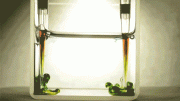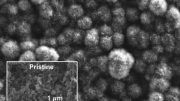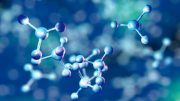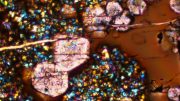
Scientists at Cornell University have re-purposed the 120-year-old Cottrell equation to understand the reactions carbon dioxide undergoes when subjected to electrochemistry, with the goal of converting the gas into useful products. The researchers believe that the classic equation can help electrochemists control the reactions to create desirable products like ethylene, ethane, or ethanol, effectively transforming an environmental issue into a renewable resource.
Scientists from Cornell University have revisited a century-old electrochemical equation, the Cottrell equation, to aid in the conversion of atmospheric carbon dioxide into a functional product, and in managing this greenhouse gas.
This equation, which bears the name of chemist Frederick Gardner Cottrell who devised it in 1903, now serves as a valuable tool for modern-day researchers. By applying electrochemistry in a controlled lab environment, scientists can gain a clearer comprehension of the diverse reactions that carbon dioxide can undergo.
The electrochemical reduction of carbon dioxide presents an opportunity to transform the gas from an environmental liability to a feedstock for chemical products or as a medium to store renewable electricity in the form of chemical bonds, as nature does.
Their work was published in the journal ACS Catalysis.
The Cottrell equation is a fundamental equation in electrochemistry that describes how the current associated with the reduction or oxidation of a redox species decreases with time during chronoamperometry, a technique where the potential between a working electrode and a reference electrode is abruptly changed and the resulting current is measured over time. Named after Frederick Gardner Cottrell, it states that the current is inversely proportional to the square root of time, provided that diffusion is the only operative mode of mass transport.
“For carbon dioxide, the better we understand the reaction pathways, the better we can control the reaction – which is what we want in the long term,” said lead author Rileigh Casebolt DiDomenico, a chemical engineering doctoral student at Cornell under the supervision of Prof. Tobias Hanrath.
“If we have better control over the reaction, then we can make what we want, when we want to make it,” DiDomenico said. “The Cottrell equation is the tool that helps us to get there.”
The equation enables a researcher to identify and control experimental parameters to take carbon dioxide and convert it into useful carbon products like ethylene, ethane, or ethanol.
Many researchers today use advanced computational methods to provide a detailed atomistic picture of processes at the catalyst surface, but these methods often involve several nuanced assumptions, which complicate direct comparison to experiments, said senior author Tobias Hanrath.
“The magnificence of this old equation is that there are very few assumptions,” Hanrath said. “If you put in experimental data, you get a better sense of truth. It’s an old classic. That’s the part that I thought was beautiful.”
DiDomenico said: “Because it is older, the Cottrell equation has been a forgotten technique. It’s classic electrochemistry. Just bringing it back to the forefront of people’s minds has been cool. And I think this equation will help other electrochemists to study their own systems.”
Reference: “Mechanistic Insights into the Formation of CO and C2 Products in Electrochemical CO2 Reduction─The Role of Sequential Charge Transfer and Chemical Reactions” by Rileigh Casebolt DiDomenico, Kelsey Levine, Laila Reimanis, Héctor D. Abruña and Tobias Hanrath, 27 March 2023, ACS Catalysis.
DOI: 10.1021/acscatal.2c06043
The study was funded by the National Science Foundation, a Cornell Energy Systems Institute-Corning Graduate Fellowship and the Cornell Engineering Learning Initiative.









There is no climate change!
We’re not a fool!
There isn’t carbon dioxide in atmosphere, only 0,038% as ever!
Wow. Thanks for your scientific knowledge and the well thought out and researched references that give it your brilliant summation.
There is little, if any, NET loss of CO2 from the atmosphere to be a climate “game changer”. Billions of tons would be required anyhow. Carbon capture and storage is an expensive energy-intensive scam.
I’m gonna save all the CO2 that I exhale and compress it to make diamonds thereby making money and “saving the planet” at the same time. Maybe I can make even more from my car’s tailpipe.
Most carbon emissions attract by 🪴 plants to grow up !?
I urge all the faux scientists in these comments to pickup a book.
I’ll start taking co2 emissions seriously when the international community takes action to reforest the planet which would create carbon sinks and possibly curtail the current mass extinction. Until then I see it as a farce to avoid the larger issue of global plastic contamination. But to each their own as science has been more about belief than science.
Ah replication
Carbon dioxide and water, for carbohydrate and oxygen formation, needs solar energy for catalytically using the chlorophyll! It will be interesting to relate REDOX to energy bonding and green energy cells from solar energy, as alternative energy source